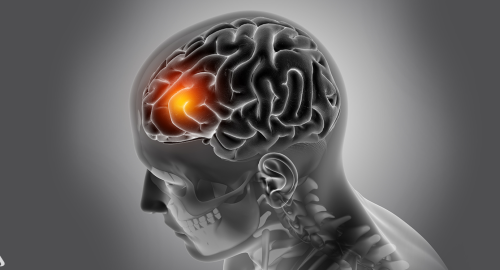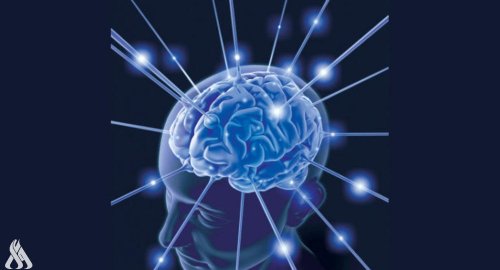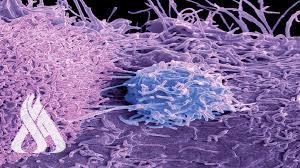
Scientists explore new mechanisms to combat glioblastoma

- 21-10-2024, 09:01
INA- SOURCES
Glioblastoma is the most common and aggressive type of primary brain tumor, with an average survival rate of 15 months, according to the Centers for Disease Control and Prevention. While glioblastoma can be diagnosed at any age, it's primarily diagnosed in older adults who are an average age of 65 years, according to the National Brain Tumor Society.
The average length of survival for glioblastoma has failed to improve since it was first identified in scientific literature nearly 100 years ago. Despite this, scientists at the Robert H. Lurie Comprehensive Cancer Center of Northwestern University remain steadfast in their commitment to improving the understanding and treatment of glioblastoma through rigorous research initiatives and clinical trials.
Identifying underlying mechanisms of tumor growth
Historically, glioblastoma's poor response to treatment has been attributed to intratumor heterogeneity and evolution, which helps the tumor resist treatment, which includes surgery followed by a combination of aggressive chemotherapy and radiation.In response, multiple Feinberg investigators have sought to identify new mechanisms that contribute to glioblastoma tumor growth, which can help tailor the development of new precision medicine strategies.
"This disease is promoted by a hypoxic niche that drives several aspects of tumor growth and resistance to therapy, and understanding the mechanisms behind its growth can lead to new therapies," said Jason Miska, Ph.D., assistant professor of Neurological Surgery.
Share
Glioblastoma is the most common and aggressive type of primary brain tumor, with an average survival rate of 15 months, according to the Centers for Disease Control and Prevention. While glioblastoma can be diagnosed at any age, it's primarily diagnosed in older adults who are an average age of 65 years, according to the National Brain Tumor Society.
Glioblastoma forms from astrocytes, which account for the majority of cells in the central nervous system. The cancer is notorious for quickly metastasizing to other parts of the brain, which can impair a person's physical, emotional and cognitive functioning, and restrict their ability to perform everyday tasks.
The average length of survival for glioblastoma has failed to improve since it was first identified in scientific literature nearly 100 years ago. Despite this, scientists at the Robert H. Lurie Comprehensive Cancer Center of Northwestern University remain steadfast in their commitment to improving the understanding and treatment of glioblastoma through rigorous research initiatives and clinical trials.
Identifying underlying mechanisms of tumor growth
Historically, glioblastoma's poor response to treatment has been attributed to intratumor heterogeneity and evolution, which helps the tumor resist treatment, which includes surgery followed by a combination of aggressive chemotherapy and radiation.
In response, multiple Feinberg investigators have sought to identify new mechanisms that contribute to glioblastoma tumor growth, which can help tailor the development of new precision medicine strategies.
"This disease is promoted by a hypoxic niche that drives several aspects of tumor growth and resistance to therapy, and understanding the mechanisms behind its growth can lead to new therapies," said Jason Miska, Ph.D., assistant professor of Neurological Surgery.
One of these mechanisms recently discovered by Miska and published in the journal Cell Metabolism includes a novel "feeding" mechanism utilized by specialized immune cells within the glioblastoma tumor microenvironment, called tumor-associated myeloid cells, to promote tumor growth and treatment resistance.
Miska's findings suggest that targeting these cells and inhibiting this "feeding" mechanism may be a promising treatment strategy for slowing tumor progression and improving treatment response, according to Miska.
"The creatine that is fed to glioblastoma increases their survival under stress, promotes stem-cell phenotypes, and ultimately contributes to tumor progression," Miska said.
To more efficiently identify these novel mechanisms, investigators co-led by Feng Yue, Ph.D., the Duane and Susan Burnham Professor of Molecular Medicine, developed a first-of-its-kind interactive 3D spatial approach to provide a comprehensive three-dimensional view of glioblastoma tumors.
The approach, detailed in a recent study published in the journal Cell, allows scientists to study genetic mutations across the whole tumor, which historically has relied on single-tissue biopsies that can only characterize one area of the tumor at a time.
"The idea is that if we find one mutation presenting in all different spots of the same tumor, that mutation is more likely to be the driver mutation or the cancer initiation event. But if we only study one spot of the tumor, we probably won't have such a clear view of the clonal initiation and evolution process," said Yue, who is a professor of Biochemistry and Molecular Genetics, of Pathology and director of the Center for Advanced Molecular Analysis. "Through these types of studies, we're able to identify many novel fusions that have been missed by other platforms. Some of them can even be targeted by FDA-approved drugs."
Developing new treatment interventions
In addition to directly treating the tumor with surgery, chemotherapy and radiation, mobilizing the body's immune system is crucial in the context of glioblastoma because limited T-cells exist within the tumor microenvironment, said Amy Heimberger, MD, Ph.D., the Jean Malnati Miller Professor of Brain Tumor Research, vice chair for Research in the Department of Neurological Surgery.
In a recent study co-led by Heimberger and collaborators from The University of Texas MD Anderson Cancer Center, scientists discovered that using a novel drug agonist to target the STING (stimulator of interferon genes) pathway in glioblastoma cells could reprogram previously suppressed immune responses.
"We demonstrated that the therapeutic activation of the STING pathway within the glioma microenvironment significantly reprograms the immune populations," said Hinda Najem, MD, MS, a postdoctoral fellow in the Heimberger laboratory and co-first author of the study. "These marked findings merit consideration for human clinical translation."
Another approach in improving glioblastoma treatment response may be harnessing B-cells to fight tumors, according to a recent study published in the Journal of Clinical Investigation and led by Catalina Lee-Chang, Ph.D., assistant professor of Neurological Surgery.
In the study, Lee-Chang's team evaluated the effectiveness of B-cell vaccines and the antibodies they promote to fight glioblastoma tumors. In mouse models of glioblastoma, the scientists found that the vaccines were able to effectively infiltrate the tumor and produce unique antibodies that inhibited glioblastoma cell migration and invasion of healthy brain cells in the mice.
"The most significant finding here is the confirmation that our B-cell therapies not only can activate tumor-killing CD8 T-cells, but a subset of them can infiltrate the tumor and produce therapeutic antibodies. We now have scientific proof that this novel B-cell therapies produce therapeutic antibodies that can inhibit glioblastoma growth," Lee-Chang said.
Another approach developed by Lee-Chang and Adam Sonabend, MD, associate professor of Neurological Surgery, used ultrasound technology to penetrate the blood-brain barrier and provide a small dose of a chemotherapy and immune checkpoint antibodies to reinvigorate the immune system's recognition of the glioblastoma tumor cells.
"This could be a major advance for the treatment of glioblastoma, which has been a frustratingly difficult cancer to treat, in part due to poor penetration of circulating drugs and antibodies into the brain," Sonabend said.
The first-of-its-kind approach, detailed in a study published in Nature Communications, uses a skull-implantable ultrasound device that can enhance the penetration of the chemotherapy drug doxorubicin and immune checkpoint blockade antibodies into the brain by producing microbubbles that temporarily open the blood-brain barrier, allowing the immunotherapy to enter the brain.
"This is a great example of translational bench-to-bedside-back-to-bench research, which sets an exceptional scenario to learn about the ability of the immune system to kill brain tumors in real-time upon treatment," said Lee-Chang. "Given the lack of effective immune response against these deadly tumors, these findings encourage us to envision a potential new treatment approach."
The Speaker of the Arab Parliament arrives in Baghdad
- politics
- 04:30
PM Al-Sudani offers condolences on death of writer Jumaa al-Lami
- Culture and art
- 02:54
Duhok of Iraq and Qadsia of Kuwait match kicks off
- Sport
- 25/04/15
Four Daesh terrorists detained in Salahuddin
- Security
- 25/04/14
Two ISIS hideouts destroyed, killing those inside in Salah al-Din
- Security
- 25/04/13












